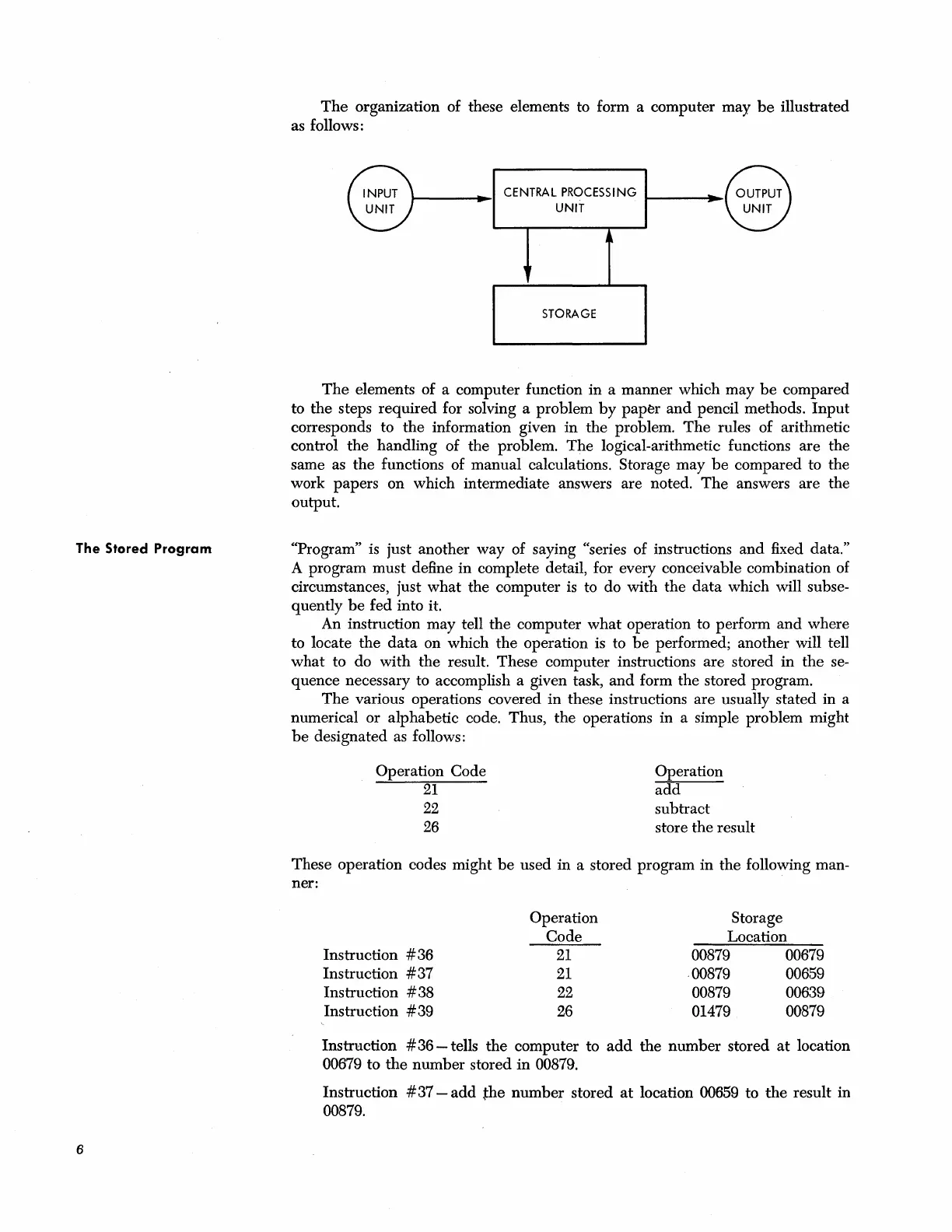The Stored
Program
6
The
organization of these elements to form a computer may
be
illustrated
as follows:
t----
........ I
CENTRAL
PROCESSING
t----
__
..
,
UNIT
STORAGE
The
elements of a computer function
in
a manner which may
be
compared
to
the
steps required for solving a problem
by
pap~r
and
pencil methods.
Input
corresponds to
the
information given
in
the problem.
The
rules of arithmetic
control
the
handling of the problem.
The
logical-arithmetic functions are the
same as
the
functions of manual calculations. Storage may
be
compared to the
work papers on which intermediate answers are noted.
The
answers are the
output.
"Program" is just another way of saying "series of instructions
and
fixed data."
A program must define
in
complete detail, for every conceivable combination of
circumstances, just
what
the computer
is
to do with the
data
which will subse-
quently
be
fed into it.
An instruction may tell the computer
what
operation to perform
and
where
to locate
the
data
on which the operation is to
be
performed; another will tell
what
to do with
the
result. These computer instructions are stored
in
the
se-
quence necessary to accomplish a given task,
and
form the stored program.
The
various operations covered
in
these instructions are usually stated in a
numerical or alphabetic code. Thus,
the
operations in a simple problem might
be
designated as follows:
Operation Code
21
22
26
Operation
add
subtract
store the result
These operation codes might
be
used
in
a stored program
in
the following man-
ner:
Instruction
# 36
Instruction
# 37
Instruction
# 38
Instruction
# 39
Operation
Code
21
21
22
26
Storage
Location
00879 00679
·00879 00659
00879 00639
01479 00879
Instruction # 36 - tells
the
computer to
add
the number stored
at
location
00679 to
the
number stored
in
00879.
Instruction
#37
-
add
the
number
stored
at
location 00659 to
the
result in
00879.
